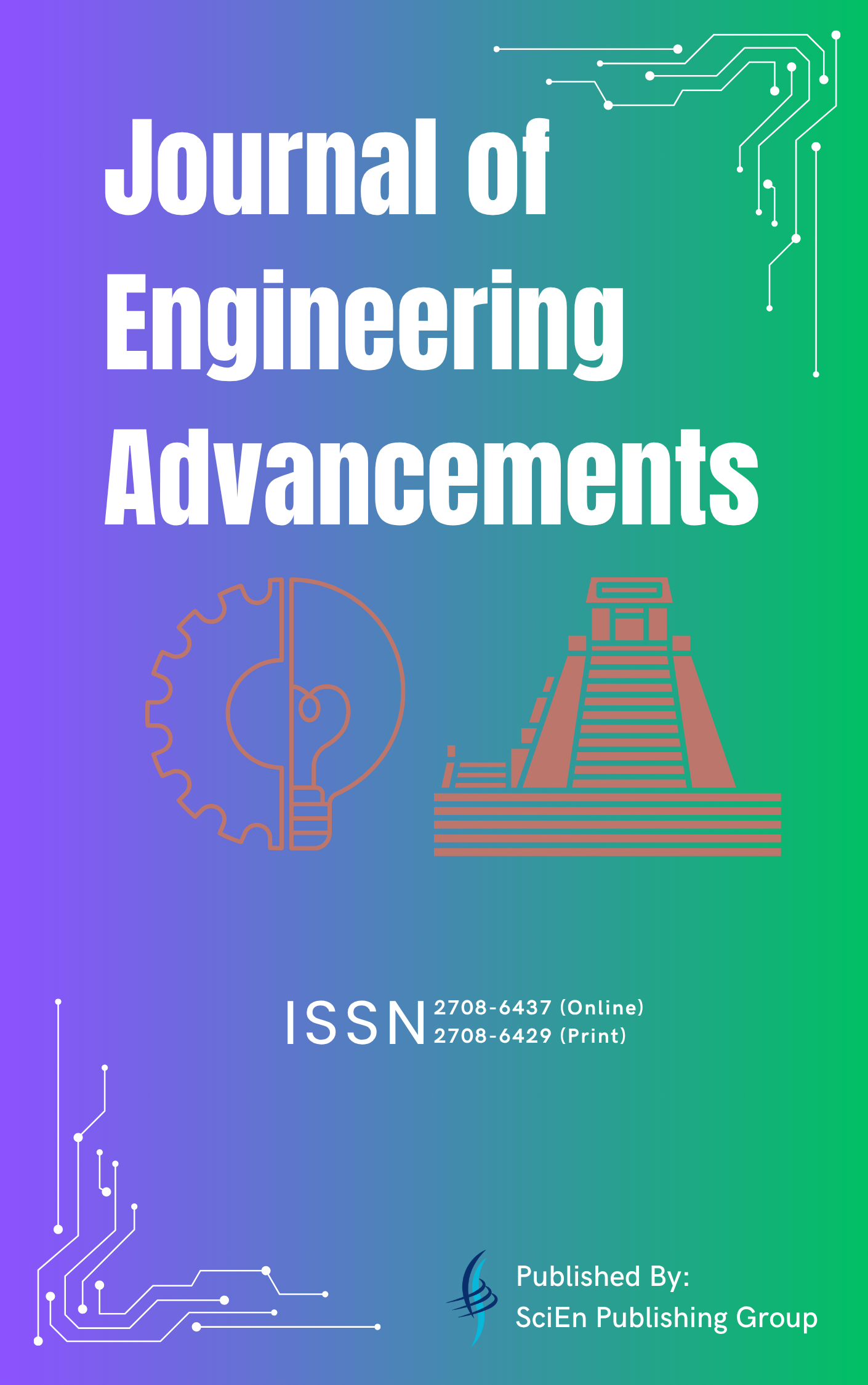CFD Analysis of Car Using NACA 4412 Spoiler
DOI:
https://doi.org/10.38032/scse.2025.1.14Keywords:
CFD, Spoiler, Drag, Lift, Downwash, Reynolds NumberAbstract
Presently stabilizing the vehicles at high speed with fuel optimization has become a field of concern. These two crucial factors are due to two significant forces drag and lift respectively. CFD is becoming a useful technique in current fluid dynamics research, because to the rapid advancement of digital computers. It brings together fluid mechanics, mathematics, and computer science. This work targets to simulate the drag and lift force on simple SEDAN car modeled in commercial CAD tool using commercial SIMULATION platform. This work focused on variation of dominant forces using an add-on device rear spoiler which was designed using NACA 4412 cross section at different angle of attacks. Then the work focused on evaluating optimal angle of attack at which the spoiler is most economic. The work then focused on variation in flow properties and co-efficient with various Reynolds number. Standard k-epsilon model with standard wall functions and second order upwind equations was used to investigate aerodynamic properties and to acquire the flow structure surrounding the car with rear spoiler. The variation with Reynolds number shows the increase in turbulence and other flow separation phenomenon with increasing Reynolds number. The effect of spoiler with increasing Reynolds number showed that after certain value the lift co efficient becomes almost constant but drag co-efficient increases with increased Reynolds number. With spoiler, it was found that the spoiler was most economic at 80 angle of attack by increasing the negative lift twice the previous value without spoiler and drag increment of 10.34% for spoiler with a value of CD= 0.322 and CL = -0.27, where without spoiler it stood for CD= 0.29 and CL = -0.1325.
Downloads
Downloads
References
[1] I. Kim, X. Geng, and H. Chen, "Development of a rear spoiler of a new type for mini-vans," Int. J. Veh. Des. vol. 48, no. 1-2, pp. 114-131, 2008. DOI: https://doi.org/10.1504/IJVD.2008.021155
[2] Bayindirili, "Numerical drag reduction of a ground vehicle by NACA2415 airfoil structured vortex generator and spoiler" Int. J. Automotive Technology vol. 13, no. 2, pp. 293-300, 2012.
[3] X. X. Hu and E. T. T. Wong, "A numerical study on rear-spoiler of passenger vehicle," World Acad. Sci. Eng. Technol., vol. 81, pp. 636-641, 2011.
[4] D. Syafiq, B. Maji, and N. Mustaffa, "FMC CFD Analysis of Rear-Spoilers Effectiveness on Sedan Vehicle in Compliance with Malaysia National Speed Limit," vol. 3, no. 1, pp. 1-7, 2021.
[5] R. Bansal and R. B. Sharma, "Drag Reduction of Passenger Car Using Add-On Devices," J. Aerodyn., vol. 2014, pp. 1-13, 2014. DOI: https://doi.org/10.1155/2014/678518
[6] C.S. Yuan, S. Mansor, and M. A. Abdullah, "Effect of spoiler angle on the aerodynamic performance of hatchback model," Int. J. Appl. Eng. Res., vol. 12, no. 22, pp. 12927-12933, 2017.
[7] H. Bagheri-Esfeh, M. Rostamzadeh-Renani, R. Rostamzadeh-Renani, and H. Safihkani, "Multi-objective optimisation of drag and lift coefficients of a car integrated with canards," Int. J. Comut. Fluid Dyn., vol. 34, no. 5, pp. 346-362, 2020. DOI: https://doi.org/10.1080/10618562.2020.1766031
[8] P. G. Wright, "Influence of Aerodynamics on the Design of Formula One Racing Cars.," Int. J. Veh. Des., vol. 3, no. 4, pp. 383-397, 1982.
[9] C. Fu, M. Uddin, and A. C. Robinson, "Turbulence modeling effects on the CFD predictions of flow over a NASCAR Gen 6 racecar," J. Wind Eng. Ind. Aerodyn., vol. 176, no. March, pp. 98-111, 2018. DOI: https://doi.org/10.1016/j.jweia.2018.03.016
[10] M. Palanivendhan, J. Chandradass, P. K. Bannaravuri, J. Philip, and K. Shubham, "Aerodynamic simulation of optimized vortex generators and rear spoiler for performance vehicles," Mater. Today Proc., vol. 45, pp. 7228-7238, 2021. DOI: https://doi.org/10.1016/j.matpr.2021.02.537
[11] A. Mechanics, "Numerical Analysis of Aerodynamic Characteristics of a of HighSpeed Car," 2015.
[12] S. W. Choi, K. S. Chang, and H. Ok, "Parametric study of a rapidly deploying spoiler with two-equation turbulence models," 39th AIAA Aerospace Science Meeting & Exhibit, doi: 10.2514/6.2001-864 T. D. Ipilakyaa, L. T. Tuleun, and M. O. Kekung, "Computational fluid dynamics modelling of an aerodynamic rear spoiler on cars," Niger. J. Technol., vol. 37, no. 4, p. 975, 2018, doi: 10.4314/njt.v37i4.17. DOI: https://doi.org/10.4314/njt.v37i4.17
[13] J. Katz and D. Garcia, "Aerodynamic effects of Indy car components," SAE Tech. Pap., vol. 111, pp. 2322-2330, 2002. DOI: https://doi.org/10.4271/2002-01-3311
[14] T. P. D. Z. G. and Z. Chen, "Numerical simulation of flow field around the race car in case Stationary wheel and rotating wheels," Int. J. Numer. Methods Heat Fluid Flow, vol. 24, no. 4, 2014.
[15] G. Rossitto, C. Sicot, V. Ferrand, J. Borée, and F. Harambat, "Aerodynamic performances of rounded fastback vehicle," Proc. Inst. Mech. Eng. Part D J. Automob. Eng., vol. 231, no. 9, pp. 1211-1221, 2017. DOI: https://doi.org/10.1177/0954407016681684
[16] R. Sharma and R. Bansal, "Drag and Lift Reduction on Passenger Car with Rear Spoiler," Res. Dev., vol. 3, no. 3, pp. 13-22, 2013.
[17] Prabhu, L. & Krishnamoorthi, Sangeetha & Gokul, P & Sushan, Nandhu & Harshed, P & Jose, Aviss. (2020).Aerodynamics analysis of the car using Solidworks flow simulation with rear spoiler using CFD. IOP Conference Series: Materials Science and Engineering. 993. 012002. DOI: https://doi.org/10.1088/1757-899X/993/1/012002
[18] M. AL-Rawi and A. Oumssount, "One-Way Fluid Structure Interaction of a Go-Kart Spoiler Using CFD Analysis," The 13th Conference of the International Sports Engineering Association, Jun. 2020. DOI: https://doi.org/10.3390/proceedings2020049051
[19] Paul, A.R., Jain, A. & Alam, F. Drag Reduction of a Passenger Car Using Flow Control Techniques. Int.J Automot. Technol. 20, 397-410 (2019). DOI: https://doi.org/10.1007/s12239-019-0039-2
Published
Conference Proceedings Volume
Section
License
Copyright (c) 2025 Md. Habibur Rahman Sakib, Mohammad Sultan Mahmud (Author)

This work is licensed under a Creative Commons Attribution 4.0 International License.
All the articles published by this journal are licensed under a Creative Commons Attribution 4.0 International License

